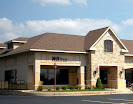Obama's energy plan has real benefits for commercial real estate
by Mike ParlatoChicago
President Barack Obama's recently passed U.S. economic stimulus plan includes numerous provisions - and billions of dollars - aimed at moving forward the energy and environment agenda. Both the President's energy plan and the stimulus package specifically call for greening buildings, and the commercial real estate industry in the Chicago area should pay attention sooner rather than later.
Many goals outlined in President Obama's plan impact commercial real estate, including reducing carbon emissions 80 percent by 2050. The Energy Information Administration reports that buildings account for approximately 40 percent of CO2 emissions in the United States each year.
Numbers like these will not go unnoticed by legislative and regulatory bodies, and real estate executives should act now to review their properties' energy and sustainability performance. Another goal involves implementing a cap and trade system for emissions, which would allow companies to emit a specified amount of CO2 each year. Exceeding this cap would result in a penalty, most likely as some form of tax.
However, if a company emitted less than its cap, they can then sell the unused emissions to another company that would otherwise exceed the cap. Companies should start now by implementing strategies to reduce their carbon footprint and, more importantly, their energy consumption.
To reach another of the plan's goals - for all new buildings being carbon neutral by 2030, these buildings would, by strict definition, not use energy from external power grids and be built and operated at prevailing market costs.
If an organization's plans include developing commercial properties, now more than ever it should consider building green. Many of the leading architecture and engineering professional organizations have already embraced this goal.
The President would also like to see 25 percent of electricity coming from renewable resources by 2025. Currently, buildings consume 70 percent of the electricity in the United States. As more renewable energy comes to market, availability will increase and prices will moderate.
Incentives for using renewable energy already exist, and new tax incentives and subsidies are expected to become available in the near future. Companies should begin to explore and incorporate alternative energy strategies into their broader sustainability plans.
Existing buildings are getting attention too. The plan calls for increasing existing buildings' efficiency by 25 percent over the next decade. For existing building owners, once they have accurately assessed the building's performance, they should then develop an actionable improvement plan for the greatest return.
President Obama is also looking to establish a grant program for early adopters. By taking inventory of current sustainability initiatives, a company can make a case to receive green incentives and funding as opportunities present themselves.
Based upon the President's proposed plan, Jones Lang LaSalle's Energy and Sustainability Services group has developed a four-step action plan to help companies position themselves to benefit in the new green economy.
Step one is to inventory current energy and sustainability initiatives, plans and programs and identify existing programs that qualify for "look-back" or newly enacted incentives.
Step two is to realize federal and local incentives already in place. Incentives can include grants, fast-track permitting or plan review, reduced fees and taxes, increased floor-to-area ratios and more. Keep in mind that green incentives should be part of the planning stage of a project. Once a project is launched, it may be too late to satisfy incentive requirements.
The third step is to capture your carbon footprint. Determine your carbon footprint now and you will better understand the imminent risks or opportunities this type of legislation presents.
Finally, embrace energy management and planning. Every indication shows that energy costs will continue to rise. As energy costs become a higher percentage of operating costs, occupiers may look beyond their own efforts to reduce consumption and more toward efforts by owners to increase the overall efficiency of their buildings. To remain competitive in the long run, owners should invest in "greening" their properties.
The Ultimate Guide to Buying a Home in Nashville
8 months ago

No comments:
Post a Comment